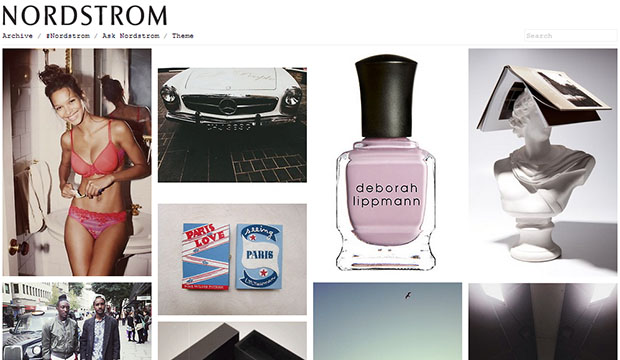
Many companies have realized the potential of social media and the impact it can have on a brand’s awareness and competitive advantage. However, some of those companies are unsure where to start. My first recommendation, do not just set up a Fan Page on Facebook and Twitter handle and begin posting items. That would be unwise and counter-productive. However, I do recommend obtaining a Twitter handle that is your company’s name right away (so no one else does).
But where to actually start? Here are my thoughts:
1. What is your marketing business strategy?
Remember: marketing is a business strategy because it affects so much of the core business. Do you want to increase brand awareness? Compete more effectively against your competition? Generate leads? Improve customer service? Whatever the goals are, it must be defined. For example, when I did social media for a non-profit, I was told their marketing goals were to increase awareness of their brand and attendance at their events. With those two goals in mind, I was able to think more strategically on what had to be planned and implemented, such as increasing followers on Twitter and creating incentives to attend events (on and offline).
2. Listen
See where your target audience is in the social sphere. That way you can see which platforms your consumers are already on, how well your competition is doing, and where it may be most beneficial for your company to be present – whether onFacebook, Twitter, etc. Again, looking back at the nonprofit I worked for, I was able to see most of their fans were on Facebook and interacting more there. However, other nonprofits in the same segment were on Twitter and doing quite well with interaction. Two well utilized platforms that were being under utilized by this nonprofit. However, because I listened to what was being said, and on what platform, I was able to see where the nonprofit should be (along with other platforms/services too, of course).
Note: You can listen to your consumers via socialmention, Tweetdeck, and through other great free social media monitoring tools. Example: I used Tweetdeck to keep track of a conference I worked on and what people were saying via the hashtag.
3. Create Content
It is not enough to just be present on platforms and share information. One must have quality information (content) to share that is relevant to the target market in which they compete and are present. I recommend beginning a blog first, create enough content, so when you begin Tweeting, posting, sharing, etc — you have content for fans and potential consumers to go back to and read more and learn more about what you do and why they should be interested. Some say, content is king. I say content is the one tool in your toolbox you should never let rust. So however you put it, content is essential to utilizing social media and your marketing strategy.
4. Identify Your Target Market
From your marketing strategy you should know who your target market is. From Step 2 above, you should already be listening to see where your target market is in the social sphere, and what they’re saying. Are they complaining? Praising? Questioning your product/service? Wishing something was better? This is your chance to decide how you would like to listen better, respond in real-time, and how you will do this (see part b).
5. Identify Your Platforms
The platforms are tools to your strategy and plan. After you saw where your competition is, where your target market is, then you could decide to also be present on those platforms, and/or ones you realize that are being under-utilized and take advantage of this “social realty space.” For example, is your competition tweeting away and engaging with the target market by promoting their service, pumping out their blog content, and answering customer service questions? Well, you should be too! Note, there are many platforms, and more and more are created daily. My suggestion, find your home base – whether it be Facebook or Twitter or whatever else. Focus on that platform (because that is where your target market is) but also utilize a few others in order to stay on the competitive edge and not fall behind.
Note: there are many platforms out there, but it does not mean you need to be on all of them. Choose what works best for your business and reaching your marketing goals.
6. Set a Content Schedule
As talked about in Step 2, you need content that is relevant. Furthermore, it is helpful to set up a schedule and/or editorial calendar to keep track of weekly/daily posts written by you and your colleagues. I suggest making a “content bank” full of great blog ideas for people to choose from, setting up a weekly schedule of when people will submit their posts, and when they will actually be posted to the blog (after reading over and making sure there are no grammar/spelling mistakes).
Having trouble deciding on blog post topics? Listen to what your community and target market is saying. Do they have “pain points” or certain areas of uncertainty? Answer them! For example, if your company is in the mobile market and people want to know about trouble shooting on their own. Show them! Key point here is to give the readers what they want. Listen first, respond quickly (or your competition will).
7. Corporate Social Media Engagement Policy
Concerned on what people in your company may Tweet or post? Set up some engagement rules so you feel better and/or designate one or two people to be in charge of posting and responding. I suggest a designated community manager, but with a higher level manager to also have access in order to show the company/brand is human and upper management likes to engage with their consumers too. It makes the brand feel more real and the consumers feel they are special.
Note, it is not always easy to respond to criticism and there will be people who respond harshly to your blog posts, Facebook posts, etc. That is the name of the game though — people are allowed to comment, and your brand has to decide how to engage and respond accordingly. Sometimes it is just a spammer, sometimes it is just a disgruntled consumer — each type of comment is unique to a brand and situation and does not necessarily have an automatic response. My suggestion, ignore/delete spam. Do not ignore a disgruntled consumer — because that may lead to more consumers who are against your service via word of mouth. Find out what you can do to help this consumer and avoid this happening again. If you respond quickly and assist, this consumer may tell people how great and efficient your response was. Thus, social media is fabulous for real-time response and consumer service issues (if used properly).
8. Measure, Measure, Measure
It is essential to monitor your success on these platforms. Use Google Analytics to keep track of your blog and traffic and how that traffic is coming to your blog. Is it direct or via social media tools like Facebook and Twitter? Which blog posts had the most traffic? This will assist in seeing what consumers responded and likes the most and allow you to strategize better for future posts. It will also let you see what did not work and how you can revise your strategy if needed.
9. Test it out
In my opinion the best way to get started is to try. After you have put together your plan, “jump in!” This was emphasized by Mike Volpe, VP of Marketing at Hubspot who once said, it is not enough to dip your toes in. So, get Tweeting, posting, and sharing. And remember, social media is not instant gratification. It takes time, like all relationships and business. So, be patient and don’t forget to have fun!
Note: This post was originally written for oneforty, which was acquired by Hubspot.
























